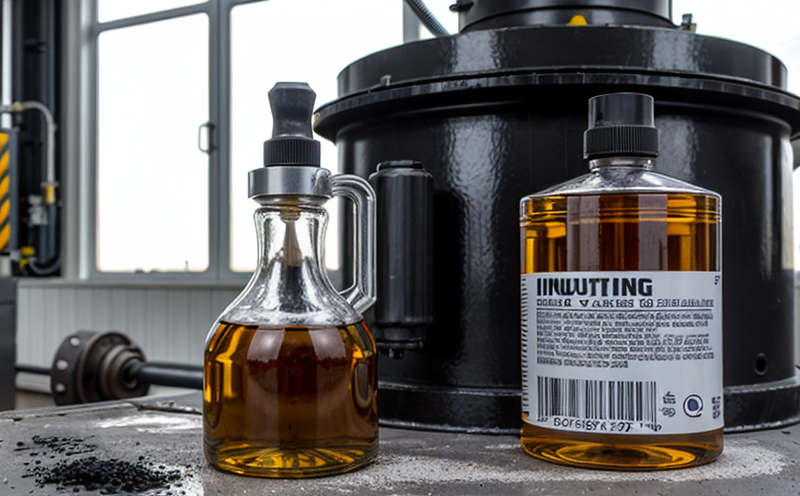ISO 4406 Particle Contamination Testing of Hydraulic Oils
The ISO 4406 particle contamination code is a standardized method used to classify the cleanliness levels of hydraulic fluids. This service plays a crucial role in ensuring that industrial machinery operates at peak efficiency and longevity. The test measures the number of particles within specified size ranges (ISO codes 0, 18/16/14, 21/19/17) per milliliter of oil using laser diffraction or sedimentation techniques.
For quality managers and compliance officers, this service ensures that the hydraulic fluids meet international standards. R&D engineers rely on it to improve fluid formulations by identifying contamination sources early in product development cycles. Procurement teams use ISO 4406 results to select reliable suppliers who maintain consistent cleanliness levels.
The test involves collecting a representative sample of oil, diluting if necessary, and then measuring the particles through filtration onto membranes or via laser scattering methods. The resulting counts are used to assign an ISO code indicating the contamination level (e.g., 18/16/14).
Understanding the implications of different particle sizes is essential for interpreting results accurately. Smaller particles (50µm) are usually visible and easier to filter out.
The significance of this testing cannot be overstated in industries such as aerospace, automotive manufacturing, heavy machinery production, and power generation. Ensuring that hydraulic fluids meet ISO 4406 standards helps prevent costly downtime from equipment failures caused by excessive wear or blockages due to particulate matter buildup.
Customer satisfaction is directly linked to reliable performance and extended service intervals provided by clean hydraulic systems. By adhering to international norms like ISO 4406, we help ensure that our clients receive the best possible outcome for their industrial applications.
Why It Matters
The cleanliness of hydraulic fluids is critical because particles within these systems can cause significant damage over time. Even minute amounts of contamination can lead to increased wear rates, reduced efficiency, and shortened equipment lifespan. Contamination can also clog filters, leading to premature failures or even complete system breakdowns.
By conducting ISO 4406 particle contamination testing regularly, organizations can proactively address potential issues before they escalate into costly repairs or replacements. This proactive approach not only enhances operational reliability but also contributes significantly towards maintaining safety standards in industrial environments.
The importance of this service extends beyond mere compliance; it represents a commitment to excellence and continuous improvement within the organization. It demonstrates leadership by setting high expectations for quality control across all processes involving hydraulic fluids.
Customer Impact and Satisfaction
Customers benefit greatly from ISO 4406 particle contamination testing because it ensures that their industrial machinery remains in optimal operating condition. This results in reduced maintenance costs, extended equipment life, improved productivity, and enhanced safety.
When hydraulic systems operate efficiently without interruptions due to contamination-induced failures, customers experience higher levels of customer satisfaction. They can expect consistent performance from their equipment, which translates into greater trust and loyalty towards our services.
We strive to exceed expectations by delivering accurate and reliable test results promptly. Our commitment to quality is reflected in the precision with which we conduct each analysis according to international standards like ISO 4406. This dedication ensures that customers receive actionable insights they can use to make informed decisions about their hydraulic fluid management practices.
Use Cases and Application Examples
- Aerospace Industry: Ensuring compliance with strict aviation standards for aircraft components that rely heavily on hydraulics.
- Automotive Manufacturing: Monitoring fluid quality during production runs to prevent defects in manufactured vehicles.
- Heavy Machinery Production: Regular checks ensure that large-scale construction equipment functions smoothly throughout its lifecycle.
- Power Generation: Preventing failures in turbines and other critical components by maintaining clean hydraulic fluids.
In each of these industries, ISO 4406 particle contamination testing serves as a cornerstone for maintaining high standards of reliability and performance. By incorporating this service into their routine maintenance schedules, companies can avoid costly disruptions while enhancing overall operational efficiency.





